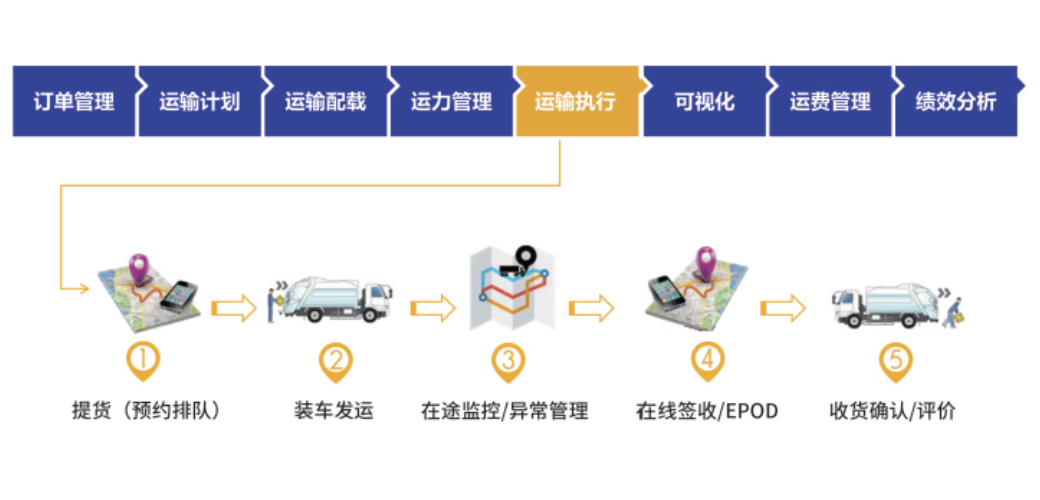
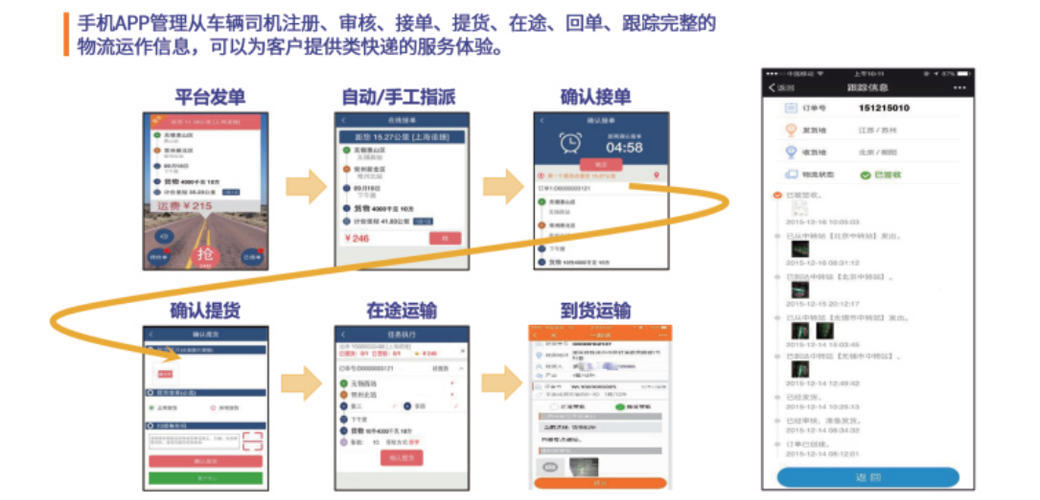
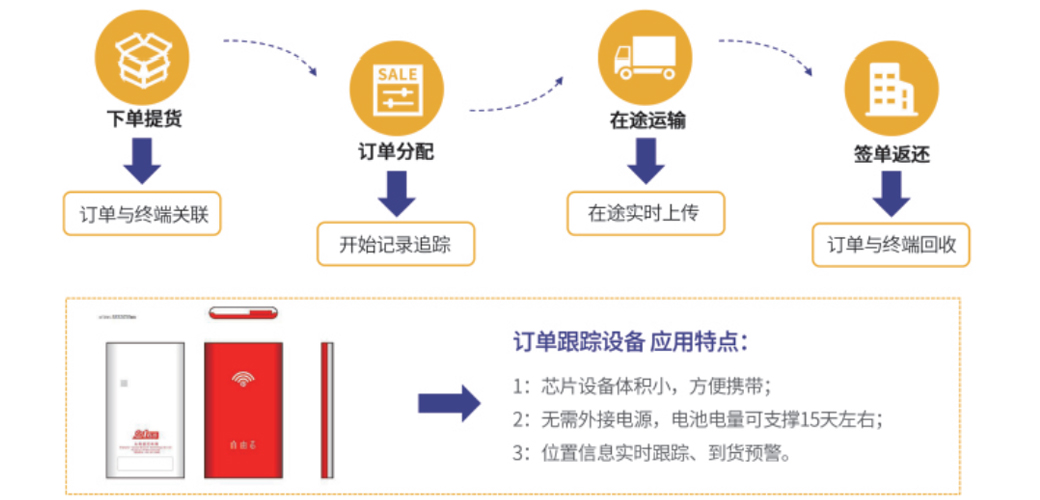
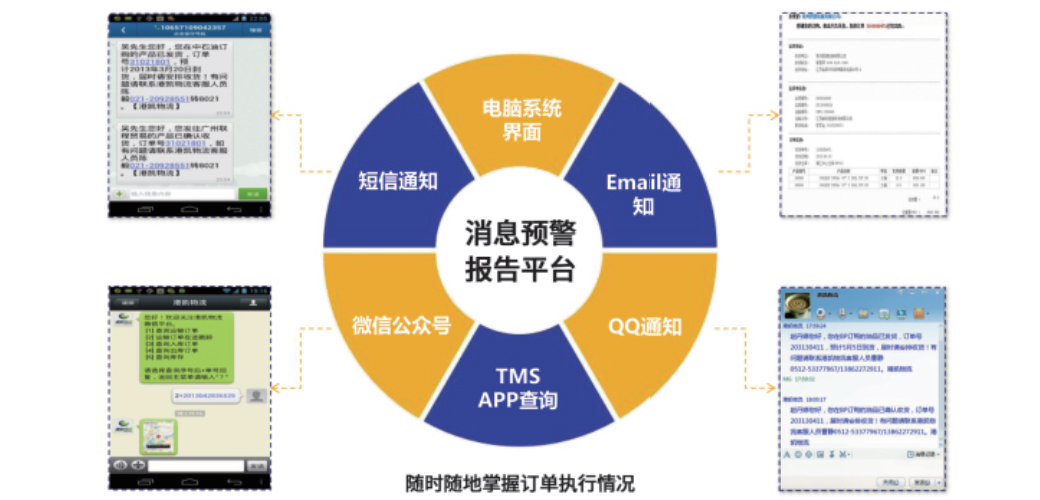
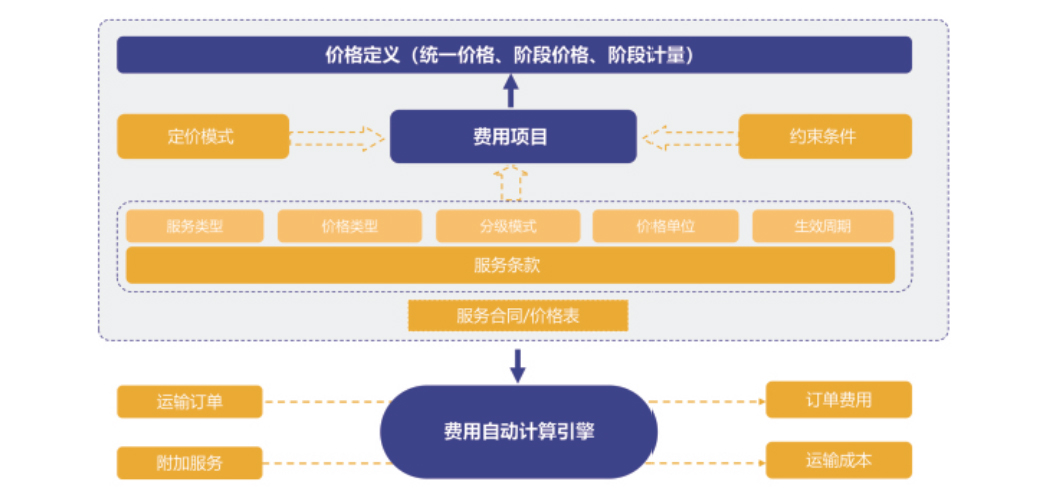
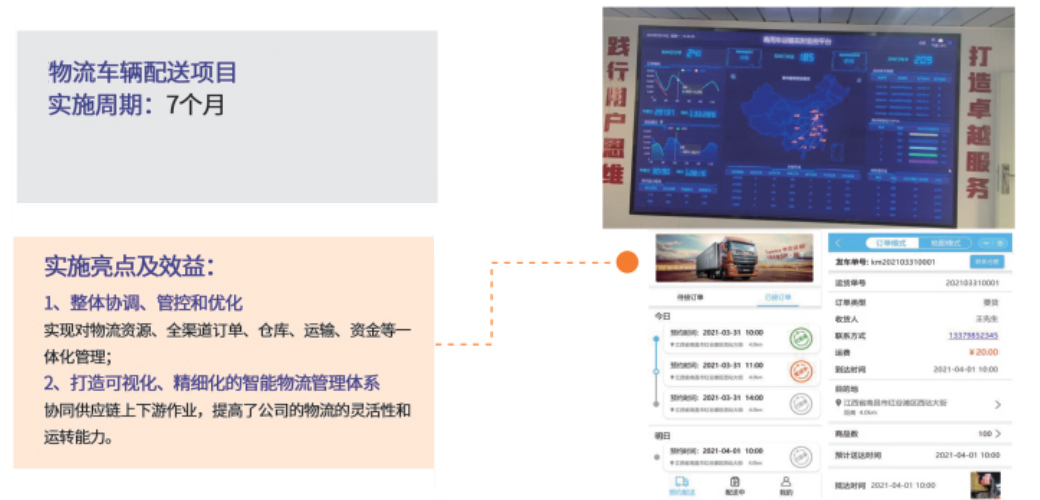
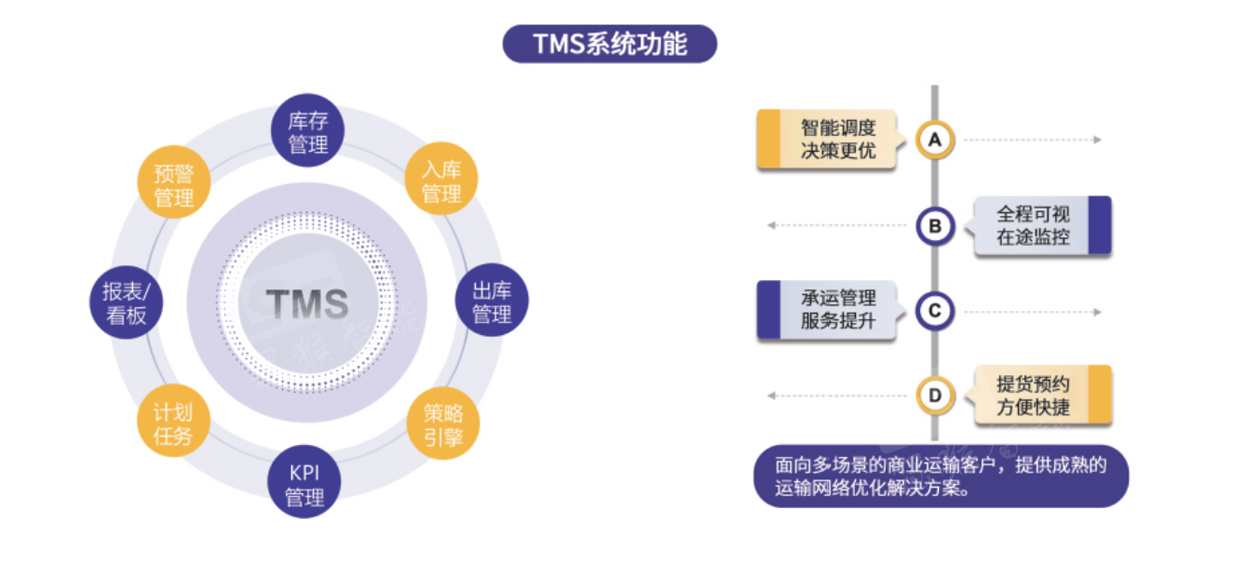
Fully support mainline logistics, regional distribution, vehicle tracking, intelligent scheduling, and fast settlement; Support mobile device applications to achieve comprehensive tracking and information visualization. It is a part of the logistics management system that manages and tracks orders placed by customers, dynamically monitors the progress and completion of orders, improves operational efficiency in the logistics process, saves operating time and costs, and enhances the market competitiveness of logistics enterprises..
For transportation orders, combining genetic algorithm to optimize vehicle and line arrangement can save transportation costs, reduce dependence on personnel, and greatly reduce personnel operation time.

Allocate empty platforms based on the arrival of vehicles and the completion status of warehouse orders, thereby achieving efficient connection between vehicle arrival, order completion picking, and platform availability.

By monitoring the nodes of the entire process from order placement to order signing, as well as monitoring the trajectory and location of vehicles, the entire process can be visualized.

G3-TMS can split and reorganize functional modules according to customer needs, integrate and assemble them with WMS, OMS, BMS and other system businesses, eliminate unnecessary functions, and reduce data interfaces between systems.

By optimizing the capacity, routes, personnel, and carriers of supply chain logistics transportation operations, the rational allocation, dynamic tracking, and chain logistics capacity resources and operational tasks can be achieved.


For transportation orders, combining genetic algorithms to optimize vehicle and line scheduling can save transportation costs, reduce dependence on personnel, support manual input or template import, and support data interface integration of multiple business systems.

Flexibly set contract and freight rules, filter drivers and match transportation routes based on conditions.

A powerful computing engine automatically generates statements and settles related expenses.

PDA and APP automatically generate routing trajectories.

Register driver, fleet, and vehicle information, and obtain real-time status through intelligent sensors.

The system automatically generates an in transit visualization form based on routing and operation nodes

Manage system parameter settings such as user management, tracking rules, pipeline operator classification, and label management.

Classification management and strategy setting of goods types, vehicles, transportation methods, payment methods, delivery methods, etc.
Through big data, intelligent scheduling and rational allocation of transportation resources, as well as scientific management of carriers, can be achieved in logistics transportation. At the same time, visualizing and monitoring the entire logistics process can comprehensively reduce logistics costs and improve the overall logistics level of the enterprise/ Different types of equipment such as dual depth, single station/multi station, straight track/transition, etc.





